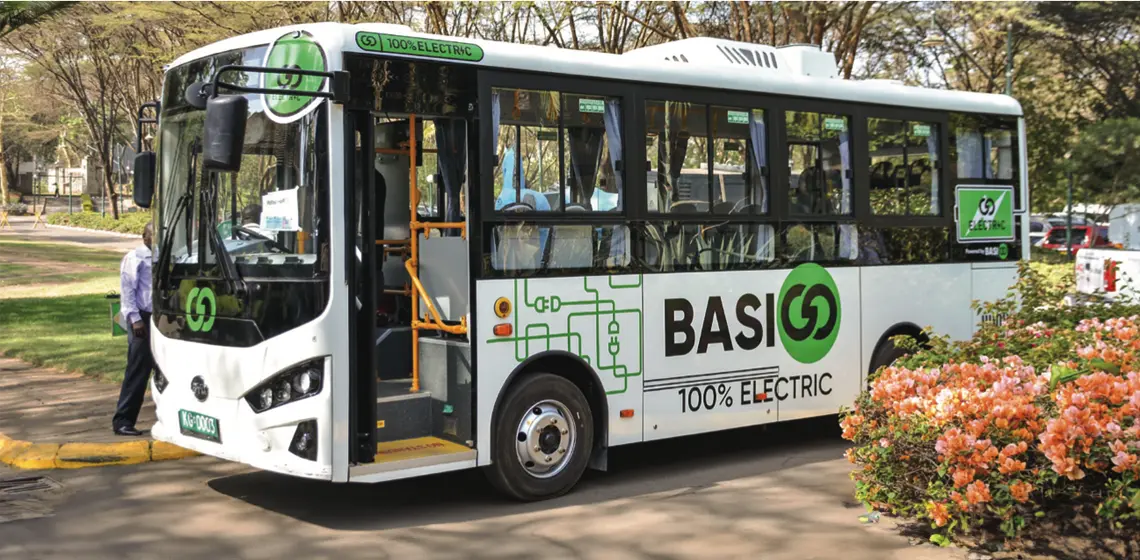Power outage notice.
Read more
E-Mobility
We are driving the future with e-mobility, promoting electric transportation for a greener, cleaner, and more sustainable tomorrow.
E-Mobility is the collective term for vehicles, boats and aircraft that are partially or fully powered by electricity. They get their energy from the electricity grid and store it ‘on board’, in most cases in a lithium-ion battery. From electric trucks, e-bikes and e-scooters to drones: E-Mobility is so much more than just electric passenger vehicles.
E-Mobility is not a distant dream anymore, but a transition that is already fully under way in a wide range of vehicles by land, air and sea.The E-Mobility space in Kenya is growing steadily, with over 1,350 electric-powered vehicles currently on the country’s roads, ranging from two, three and four-wheelers (NTSA).
With increased awareness of the benefits of E-Mobility, the demand for electric vehicles is expected to accelerate in the coming years.As we embark on the next century of serving the Nation, E-Mobility is most definitely one of the emerging and exciting opportunities to grow our business.
The main reason for the growing popularity of E-Mobility is that electric vehicles reduce CO2 emission thereby meeting the low-emission standards that are becoming increasingly important in protecting our climate.
About 74% of global transport is by road and it emits 24% of the total Carbon dioxide (CO2) emissions. This underlines the importance of deliberate transition to E-Mobility to bring down the increasing levels of the harmful emission before further damage is done to the environment.
Kenya Power is aligned to support this anticipated increase in demand through the provision of adequate and reliable electricity supply. To map out the needs of the E-Mobility sector and define a framework to provide excellent service to all players involved, the Company has been actively engaged in E-Mobility projects and initiatives with local and international partners.
E-mobility offers numerous benefits:
1. Environmental impact: Reduced greenhouse gas emissions and air pollution.
2. Energy efficiency: Higher efficiency compared to internal combustion engines.
3. Cost savings: Lower operating and maintenance costs over time.
4. Energy independence: Reduced reliance on fossil fuels.
5. Noise reduction: Quieter operation, leading to less noise pollution.
6. Innovation and jobs: Growth in new industries and job creation in the EV sector.
7. Health benefits: Improved air quality contributes to better public health.
8. Performance: Instant torque and smooth acceleration.
9. Regulatory compliance: Easier to meet stringent emissions regulations.
10. Grid stability: Potential for EVs to support and stabilise the electric grid through vehicle-to-grid (V2G) technology.
The key success factors for smooth and faster adoption of E-Mobility are:
Presently, the country has an installed capacity of 3,321MW against a peak demand of 2,149MW. The available capacity is generally close in value to the effective capacity with variations happening from day to day depending on breakdowns, maintenance and generation resource availability. During off- peak, which happens late in the night, the demand drops to about 1,000MW.
The average load varies from about 1,100MW to 1,500MW. Charging electric vehicles especially at night can help bridge the gap between off-peak load available generation capacity as well as raise the average demand to above 1,500MW.
The average passenger electric car has a 40kWh battery. On a full charge, the range is between 250km to 300km per full charge. Normal charging will take 3 to 5 hours. This, if charged daily, presents about 40 units of energy.
For electric buses, the battery size is generally above 100kWh. For example, a BYD k6 bus has a battery size of 110kWh with a range of 250km per full charge. Charging the electric bus takes 2 to 3 hours using a 60kW charger. This presents a significant energy consumption.
This report is a synopsis of the E-Mobility Stakeholders’ Conference held on 7th and 8th February 2023 at Safari Park Hotel Nairobi. It commences with an introduction that provides a background of E-Mobility.
This is followed by a justification of E-Mobility and the reasons for holding the conference. Conference details and key issues raised are outlined and this is followed by the conference impact and coverage. The risk analysis during the E-Mobility transition is analysed and presented.
Finally, the conclusions and recommendations from the E-Mobility Conference are outlined.
Kenya Power has been engaging in various initiatives geared towards E-Mobility.
The adoption of electric vehicles is a complex and unpredictable process that is unlikely to occur on its own. Some of the strategies adopted by Kenya Power to fast track adoption of E-Mobility in Kenya revolve around the following:
As a Company whose main duty is to distribute electricity, we are aware that a reliable grid is critical in the adoption and growth of E-Mobility in the country. The Company has invested heavily in ensuring a stable and dependable grid, as well as automation to accommodate the exponential growth in our customer numbers, and to improve the flexibility of the grid and, in turn, the quality of power supply.
Today, we boast of an extensive grid totaling about 300,000 kilometers in circuit length of the high, medium, and low voltage networks, which serve over 9.1 million customers, giving access to over 75% of the country’s population in all 47 counties.
The county also prides itself in having over 90% of its energy being generated from clean/ green sources. Presently, the country has an installed capacity of 3,321MW against a peak demand of 2,149MW. During off-peak, which happens late in the night, the demand drops to about 1,100MW. This means electric vehicles can charge at night.
The University of Massachusetts and the World Resource Institute recently carried out a study to evaluate the readiness of Nairobi’s power grid to handle EV charging demand. The study found that Nairobi’s current power infrastructure is strong enough to support the switch to electric of 100% of two-wheeler vehicles in the city. Further, the power infrastructure can fully support a similar switch of 10% of Nairobi’s other vehicles, including private and commercial fleets, which are presently at approximately one million.
In addition, the research suggests that electrification of transport in Nairobi will be beneficial for the overall technical performance of the grid system as it would translate to a better utilisation of the system especially during off-peak hours.
As a Company whose main duty is to distribute electricity, we are aware that a reliable grid is critical in the adoption and growth of E-Mobility in the country. The Company has invested heavily in ensuring a stable and dependable grid, as well as automation to accommodate the exponential growth in our customer numbers, and to improve the flexibility of the grid and, in turn, the quality of power supply.
As a Company whose main duty is to distribute electricity, we are aware that a reliable grid is critical in the adoption and growth of E-Mobility in the country. The Company has invested heavily in ensuring a stable and dependable grid, as well as automation to accommodate the exponential growth in our customer numbers, and to improve the flexibility of the grid and, in turn, the quality of power supply.
As a Company whose main duty is to distribute electricity, we are aware that a reliable grid is critical in the adoption and growth of E-Mobility in the country. The Company has invested heavily in ensuring a stable and dependable grid, as well as automation to accommodate the exponential growth in our customer numbers, and to improve the flexibility of the grid and, in turn, the quality of power supply.
As a Company whose main duty is to distribute electricity, we are aware that a reliable grid is critical in the adoption and growth of E-Mobility in the country. The Company has invested heavily in ensuring a stable and dependable grid, as well as automation to accommodate the exponential growth in our customer numbers, and to improve the flexibility of the grid and, in turn, the quality of power supply.
Our Partners




We are driving the future with e-mobility, promoting electric transportation for a greener, cleaner & more sustainable tomorrow.
USSD
National Contact Center
Support Email
Kolobot Rd
P.O. BOX
© 2025 Kenya Power. All rights reserved.
This website uses cookies. Accepting our cookies is optional but recommended, as they are delicious. See our cookie policy.
